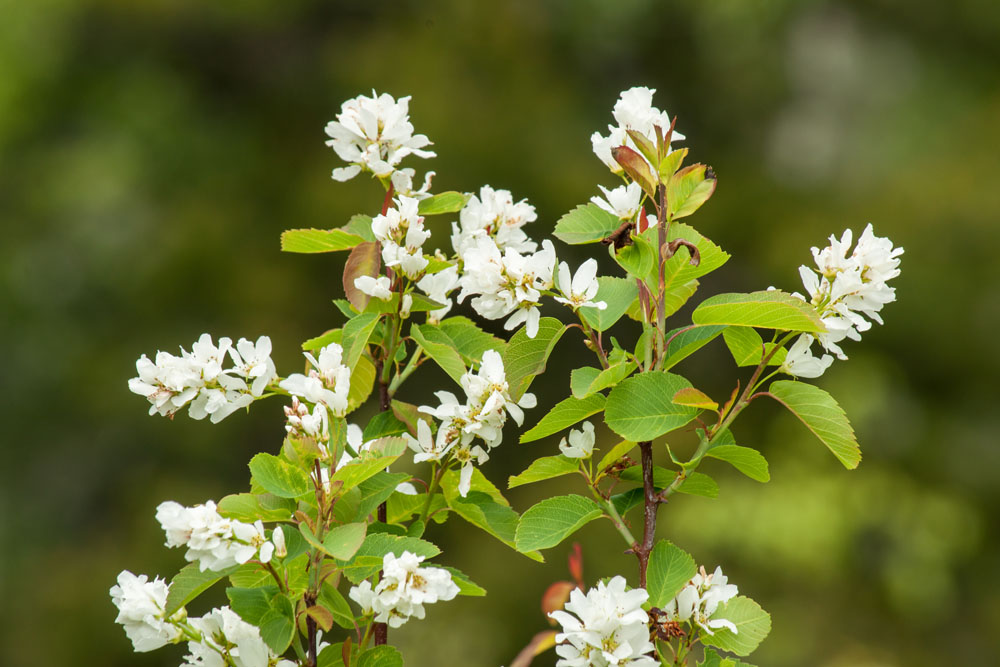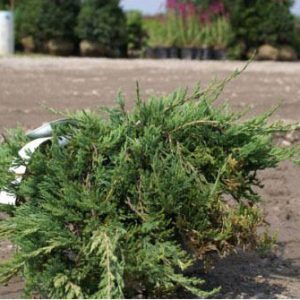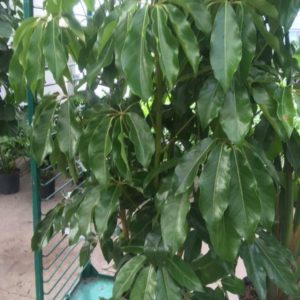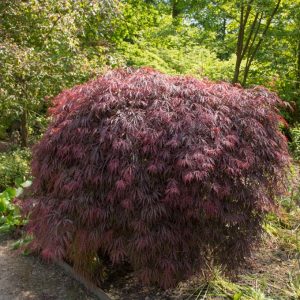Description
Amelanchier – Seviceberry – Shadbush – Juneberry – Snowy Mespilus
There are about 30 species from moist woodland and stream banks in Europe, Asia, and North America are deciduous single or multi stem upright shrubs and small trees growing 20-30 feet tall, in this genus. There prized for their clouds of short displays of white sprays, of 5 petaled ½-3/4” across, star shaped flowers that bloom from early spring to mid spring. Flowers appear along with the simple oval leaves that have a downy underside. Leaves have finely toothed edges, which open silver or bronze and develop brilliant autumn color. They also bear spherical or pear shaped green, or maroon, or purple fruit ripening to purple or brown or black, which are edible and attracts birds.
Some species do well in acidic boggy ground or by the side of a pond. Most prefer moist shelter sites under other trees but with ample light.
This species is prone fire blight, and variety of fungal leaf spots, Gymnosporangium rust, powdery mildew, dieback, and cankers caused by many different fungi occur.
Amelanchier alnifolia – Saskatoon Serviceberry – Western Serviceberry – Alderleaf Serviceberry – This species grows anywhere from 3’feet to 12’ feet tall and wide and derives from Central Alaska down the Rocky Mountains to Colorado naturally occurring on small brooks or on stream banks or shelter of rocks on mountains. It’s a variable species branching from the base bearing 3” wide, white flowers among 1-2” circular, coarsely toothed leaves in late spring. Flowers are followed by ½” diameter sweet blue-black fruit. The leaves turn bright red or yellow in autumn. It has a limited value, as an ornamental but is extremely cold hardy and produces juicy edible fruit.
Zones 4-9





